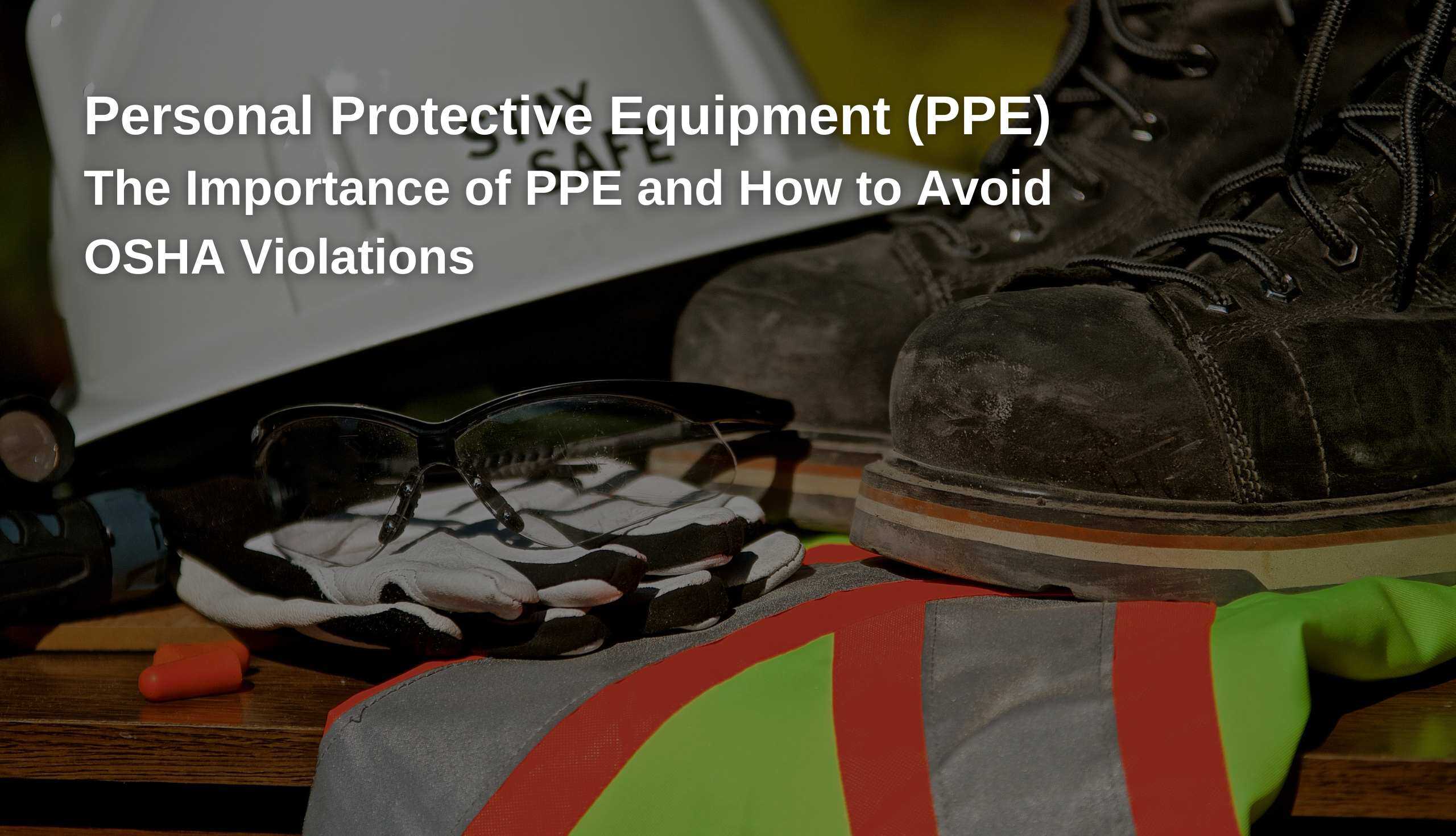
The Importance of PPE: Avoiding OSHA Violations
Personal Protective Equipment (PPE) is critical for ensuring safety in the workplace. From construction sites to manufacturing plants, PPE acts as a barrier between workers and potential hazards. Despite its importance, PPE-related violations are consistently among the most cited by the Occupational Safety and Health Administration (OSHA). Understanding the importance of PPE and how to avoid these violations can help create a safer working environment and prevent costly fines.
Why PPE is Essential
PPE includes a variety of gear such as helmets, gloves, goggles, and respirators, each designed to protect against specific hazards. The primary purposes of PPE are to:
- Prevent Injuries: PPE shields workers from physical, chemical, and biological hazards. For example, helmets protect against head injuries, gloves can prevent burns and cuts, and safety glasses shield eyes from debris and chemical splashes.
- Enhance Safety Compliance: Proper use of PPE ensures compliance with safety regulations, reducing the risk of accidents and the severity of injuries if they occur.
- Increase Productivity: A safe workplace leads to fewer accidents and illnesses, resulting in less downtime and higher productivity.
Examples of PPE
Head Protection
– Hard Hats: Used in construction and industrial environments to protect against head injuries from falling objects.
– Bump Caps: Designed for environments with low head clearance where hard hats are not necessary.
Eye and Face Protection
– Safety Glasses: Essential in workshops and laboratories to protect against flying particles and chemical splashes.
– Goggles: Provide a seal around the eyes for better protection against dust, chemical splashes, and vapors.
– Face Shields: Used in welding, grinding, and medical environments to protect the entire face from splashes, sparks, and infectious materials.
Hearing Protection
– Earplugs: Used in environments with high noise levels to prevent hearing loss.
– Earmuffs: Provide more extensive coverage and are often used in conjunction with earplugs for maximum protection.
Respiratory Protection
– Dust Masks: Protect against airborne particles in construction and woodworking.
– Respirators: Necessary in environments with hazardous fumes, gases, or vapors, such as in chemical plants and paint shops.
Hand Protection
– Gloves: Available in various materials such as latex, nitrile, leather, and Kevlar, designed to protect against chemicals, heat, cuts, and abrasions.
Body Protection
– Coveralls: Provide full-body protection against chemical splashes, dirt, and contaminants in industrial settings.
– Aprons: Used in laboratories and kitchens to protect against spills and splashes.
Foot Protection
– Safety Boots: Equipped with steel toes and slip-resistant soles to protect against falling objects and slippery surfaces.
– Rubber Boots: Used in wet environments and chemical handling for waterproof and chemical-resistant protection.
Fall Protection
– Harnesses and Lanyards: Essential for workers at heights, such as in construction and maintenance, to prevent falls.
PPE and OSHA Violations
OSHA standards require employers to provide appropriate PPE to their employees and ensure its proper use. Despite these clear guidelines, PPE violations are frequently cited during inspections. Some of the common reasons for these violations include:
- Lack of PPE: Employers failing to provide necessary PPE for specific job functions.
- Improper Use: Employees not using PPE correctly, often due to inadequate training.
- Poor Maintenance: PPE not being maintained or replaced as needed, leading to equipment failure.
- Non-Compliance: Employees choosing not to wear PPE due to discomfort or lack of enforcement by supervisors.
Statistics on PPE Violations
According to OSHA’s annual reports, PPE violations consistently rank among the top ten most cited violations. For instance, failure to provide fall protection, respiratory protection, and eye/face protection are common citations. These violations not only put workers at risk but also result in significant fines for employers.
Avoiding PPE Violations
To avoid PPE-related OSHA violations, employers can implement several strategies:
- Conduct a Hazard Assessment: Identify potential hazards in the workplace and determine the necessary PPE for each task.
- Provide Appropriate PPE: Ensure that all employees have access to the PPE required for their specific roles.
- Implement Training Programs: Conduct regular training sessions to educate employees on the proper use, care, and maintenance of PPE.
- Enforce PPE Usage: Develop and enforce a strict PPE policy, making it mandatory for employees to wear the required gear at all times.
- Regular Inspections and Maintenance: Routinely inspect PPE for wear and tear and replace damaged or expired equipment promptly.
- Foster a Safety Culture: Encourage a workplace culture where safety is a priority, and employees feel responsible for their own and their colleagues’ safety.
Conclusion
Personal Protective Equipment is a cornerstone of workplace safety, yet PPE-related violations remain a significant issue. By understanding the importance of PPE and implementing robust safety practices, employers can protect their workers, comply with OSHA regulations, and avoid costly violations. A proactive approach to PPE management not only enhances safety but also promotes a culture of responsibility and care within the workplace.
A-Tech offers many services and training programs that cater to the specific needs of your industry and work environment to stay in compliance with OSHA regulations. Click here to view the services that A-Tech has to offer and download a free safety checklist. If you have any questions in regards to PPE or training and regulations feel free to reach out to us by clicking here.


